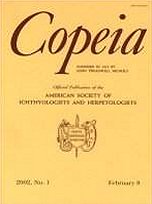Etheostoma virgatum has been treated as a species occupying three widely separated regions of the Cumberland River drainage in Kentucky and Tennessee. To test the hypothesis that the three widely disjunct populations of E. virgatum are monophyletic, DNA sequence data from mitochondrial and nuclear loci were gathered on E. virgatum and other species of Catonotus including all species of barcheek darters. Morphological data were analyzed from populations throughout the range of E. virgatum. The three widely separated populations of E. virgatum, although morphologically similar, do not form a monophyletic group in phylogenetic analyses of molecular data. Consistent with this result, two of the populations are described as new species. These three species had been identified as E. virgatum because of the shared presence of bold dark stripes along the side of the body, a feature not found in the other four species of barcheeks. It is unclear whether the presence of bold stripes represents retention of a pleisiomorphic trait (lost in other barcheeks) or whether the condition arose independently in these three species.
How to translate text using browser tools
1 September 2003
Phylogenetic Relationships of Barcheek Darters (Percidae: Etheostoma, Subgenus Catonotus) with Descriptions of Two New Species
Lawrence M. Page,
Michael Hardman,
Thomas J. Near
ACCESS THE FULL ARTICLE

Copeia
Vol. 2003 • No. 3
September 2003
Vol. 2003 • No. 3
September 2003




